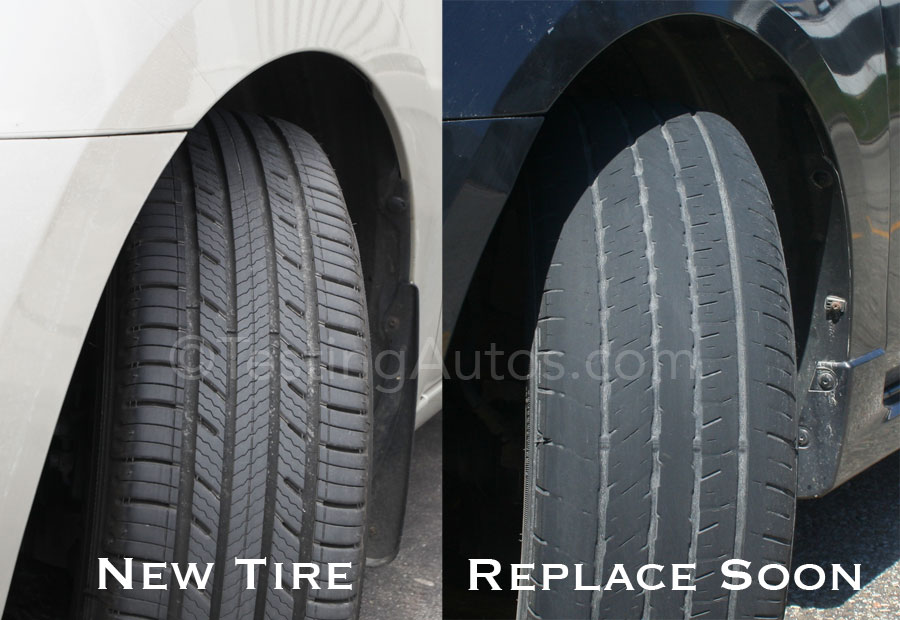You should replace your car tires every six years. Regular tire replacement is crucial for safety and performance.
Maintaining good tires is key to a safe and smooth ride. Worn-out tires can lead to accidents and poor fuel efficiency. But how often should you replace them? Many factors influence tire longevity, such as driving habits, road conditions, and tire quality.
Knowing the right time to change tires can save you money and keep you safe on the road. In this guide, we will explore the signs and intervals for tire replacement, so you can drive with confidence.
Factors Affecting Tire Replacement
Driving speed and style impact tire wear. Fast driving wears tires quickly. Sudden stops and sharp turns do too. Smooth driving habits extend tire life. Frequent long trips also wear tires faster. City driving with many stops and starts is tough on tires.
Potholes and rough roads damage tires fast. Smooth, well-maintained roads extend tire life. Gravel roads are harsh on tires. Hot climates cause tires to wear out quicker. Cold weather can cause cracks in tires. Wet and icy roads may cause more tire wear due to slipping.
High-quality tires last longer. Cheap tires wear out faster. Brand matters. Some brands offer better durability. Regular tire checks help too. Check for proper inflation. Keep tires balanced and aligned. Good maintenance extends tire life.
Signs You Need New Tires
Tread wear indicators are small bars in the tire grooves. These bars become visible when the tread is low. If you see these bars, it’s time for new tires. Low tread can reduce grip and safety.
Cracks on the tire surface mean the rubber is breaking down. Bulges show the tire structure is weak. These signs can lead to tire failure. Replace the tires if you see cracks or bulges.
Vibration while driving can be a sign of tire issues. Noise from the tires also signals problems. These can mean the tires are unbalanced or damaged. New tires can fix these issues.
Tire Maintenance Tips
Check your tires every month. Look for cracks, cuts, and bulges. Inspect the tread depth. If the tread is low, replace the tire. Good tread helps grip the road.
Keep tires inflated to the right pressure. Check pressure once a month. Use a tire gauge. Low pressure can cause tire wear. Overinflated tires can be dangerous.
Rotate tires every 6,000 miles. This helps them wear evenly. Get your alignment checked twice a year. Proper alignment keeps tires from wearing out fast.

Credit: www.reddit.com
Seasonal Considerations
Winter tires provide better grip in snow and ice. They have special tread patterns. These patterns help in cold conditions. It’s best to replace winter tires every three to four years. Look for signs of wear. Cracks and low tread depth mean it’s time for new tires.
Summer tires work well in warm weather. They offer great handling on dry and wet roads. These tires need replacing every three to five years. Check for uneven wear. Bald spots indicate a need for replacement.
All-season tires can be used year-round. They work in both hot and cold weather. Every five to six years, they should be replaced. Inspect them regularly. Worn-out treads reduce safety and performance.
Manufacturer Recommendations
Check the owner’s manual for tire replacement advice. Each car has specific needs. Regular checks can help maintain safety. The manual gives details on tire care.
OEM tires come from the car’s maker. They match the car’s original tires. Aftermarket tires are made by other companies. They might be cheaper. But they may not always fit perfectly. Always compare the options before buying.

Credit: www.testingautos.com
Cost And Budgeting
Choosing the right tires can be tricky. High-quality tires cost more. But they last longer. Cheap tires save money now. But may wear out faster. This means you might buy tires more often. Consider your needs. Do you drive a lot? You might need better tires. Short trips? Cheaper tires might work fine.
Think about long-term savings. Spending more now might save later. Good tires can improve gas mileage. They can last longer. They might need fewer repairs. This means you spend less over time. Cheap tires might seem like a good deal. But they can cost more in the long run.

Credit: tirewarehouse.ca
Frequently Asked Questions
How Long Do Tires Last On Average?
Tires typically last 3 to 5 years or 30,000 to 50,000 miles. Regular maintenance can extend their lifespan.
How Frequently Should Tires Be Replaced?
Tires should generally be replaced every 6 years. Check tread depth and signs of wear regularly for safety.
How Do I Know If Tires Need Replacing?
Check tread depth with a penny. Inspect for cracks, blisters, or bulges. Uneven wear indicates alignment issues.
Are 7 Year Old Tires Still Good?
No, 7-year-old tires are not recommended. Tires deteriorate over time, losing grip and safety. Replace them for better performance and safety.
Conclusion
Regularly checking your tires is crucial for safety. Replace them every six years. Inspect tread wear monthly. Rotate tires every 5,000 miles. Address punctures immediately. Choose high-quality tires for durability. Your car’s performance depends on good tires. Schedule tire maintenance consistently.
Enjoy safe driving and peace of mind.

